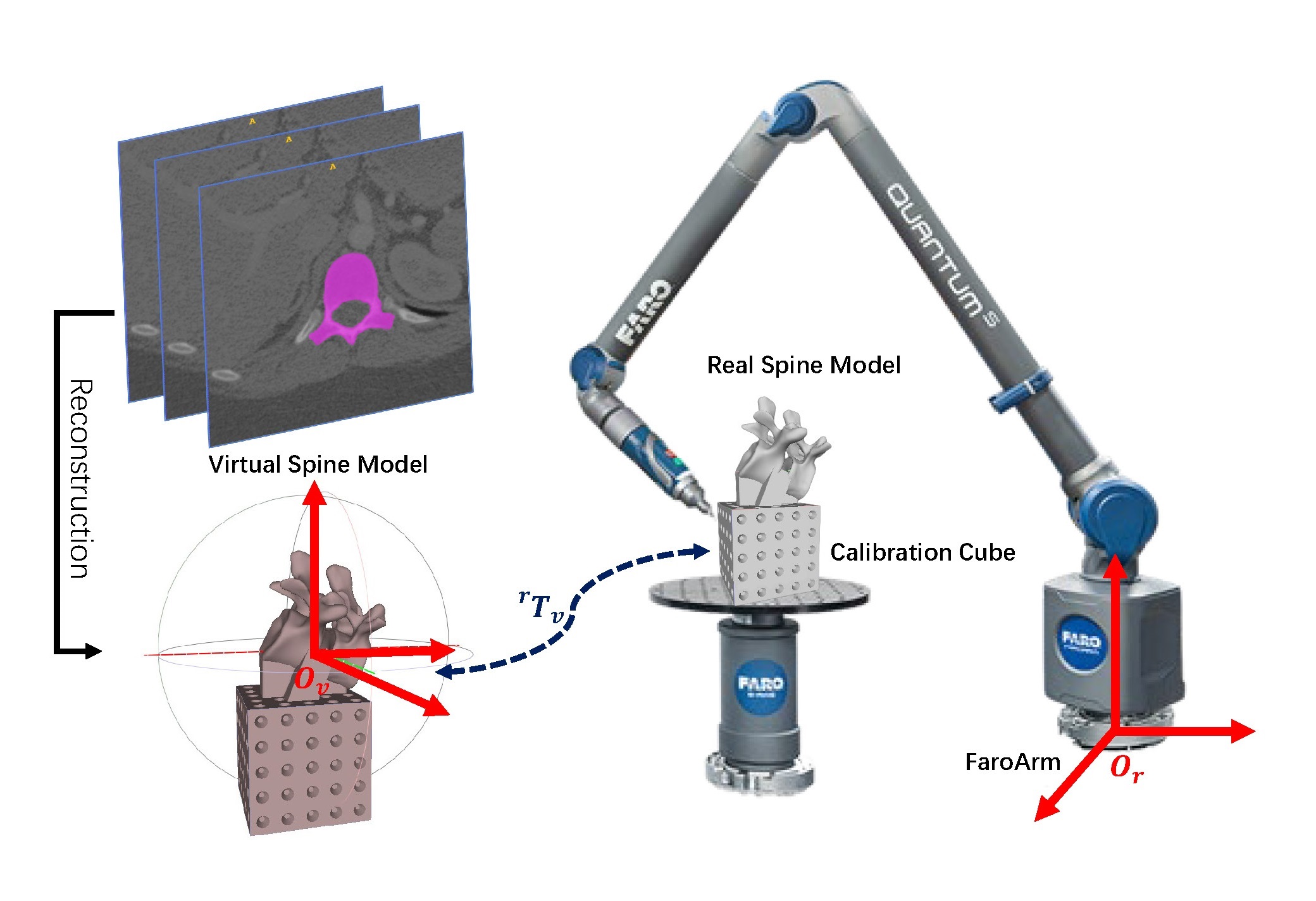AR-based Surgical Navigation
Key Techniques of an AR-based Spine Surgical Navigation System
10/2020-02/2022
McGill University: Master Thesis Project, Supervisor: Dr. Mark Driscoll, Co-supervisor: Dr. Jorge Angeles, Dr. Ahmed Aoude
Proposed a coordinate-measurement solution using the FaroArm, a high-precision measuring robotic arm, to evaluate the accuracy of the virtual lumbar spine model reconstructed from CT images. A landmark registration algorithm was used for calibration. The error from the reconstruction procedures for the virtual model were quantified.
Developed an AR-based surgical navigation system for high-quality visualization and accurate navigation during the spine surgery. This includes the calibration of HoloLens and surgical instruments using Polaris NDI (a surgical tool tracking device), the registration between real and virtual models
Part 1: This part is the registration procedure linking the coordinate systems of virtual spine in CT image data with real patient. Landmark registration can be used if corresponding fiducial markers are selected. Surface registration is another approach by sliding the probe on the surface of bone to collect a seires of points. Others registration methods depend on X-ray/DRR registration using C-arm or O-arm.
Part 2: The calibration of the surgical instruments. We use the tip of the probe to touch the tip of the drill and keep their axis aligned with each other.
Part 3: Automatic segmentation of vertebra using deep learning (variations of U-net) and then 3D reconstruction.
Part 4: The calibration of HoloLens. A calibration cube was 3d printed and the dual quaternion can serve as a quick calibration algorithm. An UWP is deployed into HoloLens which receives only real-time data and does not get involved in the computation.
Screenshot of the navigation software under development:
Automatic Surgical Routes Planning for Reverse Total Shoulder Arthroplasty
12/2020-08/2021
Shanghai Jiao Tong University: Master Project, Supervisor: Dr. Xiaojun Chen



